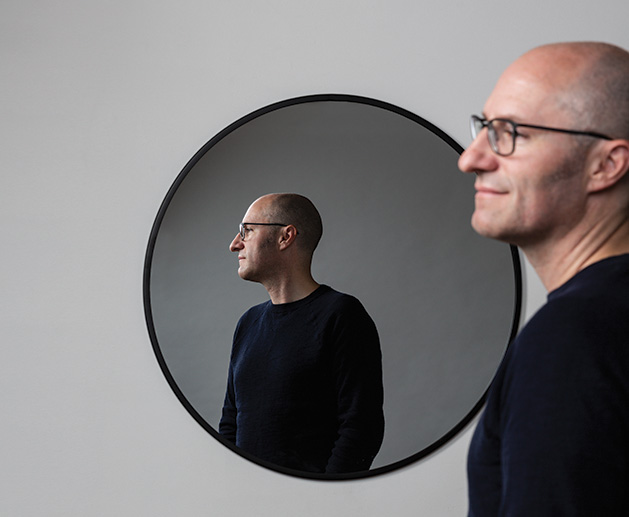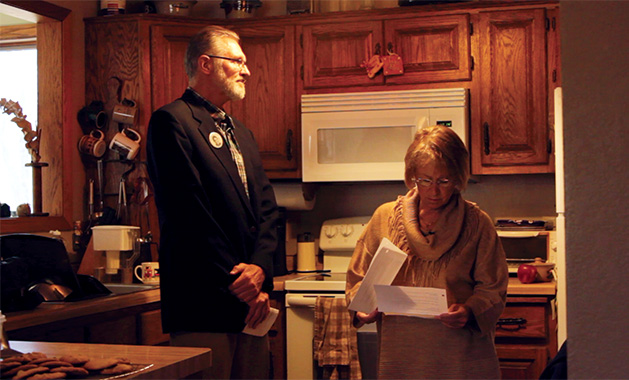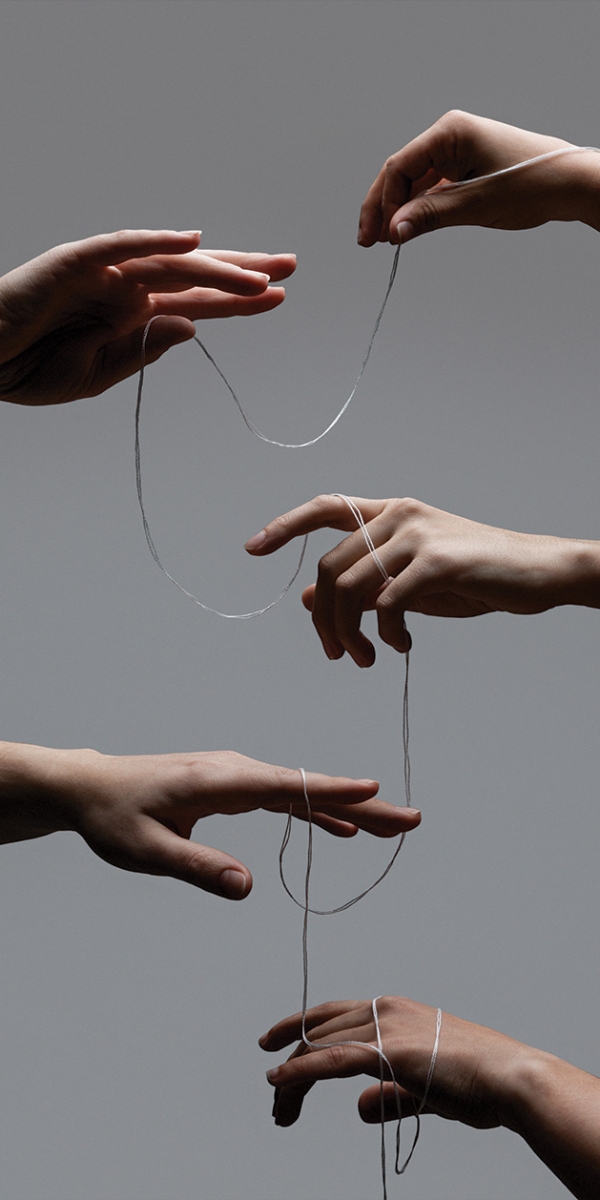
For more than 27 years, Minnesotans and millions of people beyond our borders were rocked by Jacob Wetterling’s abduction and the ensuing investigation into his disappearance. Minnetonka native and independent filmmaker Chris Newberry has set the stage in developing a documentary film about the disappearance of Jacob, as well as highlighting Jerry and Patty Wetterling’s determination to build positive and meaningful outcomes from their family’s tragic experience.
Newberry was born and raised in Minnetonka. Having attended Minnetonka public schools, he graduated from Minnetonka High School in 1993. Newberry’s wife also grew up in the area and both extended families still live in the Lake Minnetonka area.

Photo by Rachel Nadeau
Like a lot of Minnesotans, for years Newberry was touched by the story of Jacob Wetterling—haunted by it, but also inspired by the resilience of Jacob’s parents, Jerry and Patty.
“I was just a little bit older than Jacob in 1989, and because I have my own kids who are approaching that age now, I have always felt connected to Jacob and his story—as connected as someone can be from a distance,” Newberry said. “My jumping-off point for contacting the Wetterlings, and making this film, was this idea that Jacob’s story has had this huge impact and I wanted to explore that. Of course we will tell Jacob’s story—there are so many powerful dimensions to this story of a missing child, and a cold case that was eventually solved—but our goal is to look at the wider impact of it, and that’s what Patty and Jerry and I talk about when discussing the film.”
With this film, Newberry wants to honor Jacob’s memory with a truthful, comprehensive, and ultimately hopeful look at his story. As Newberry explains, the film’s main thrust is to give audiences a close look at the inspiring people that rallied around Jacob in the search for him, and did so despite long odds and really horrible, haunting circumstances.
“There is a lot of gripping material, so like any filmmaker I hope to have audiences engaged and enthralled by the film from the first frame to the last,” Newberry says. “And at the end of the film I believe people will walk out of the theater, or click off their TV, and feel a sense of hope for the future, that when daunting things occur, when faced with the unimaginable, that human beings are capable of incredible things.”
As Patty Wetterling explains, she and her husband, Jerry, met Newberry in 2015 when he first proposed his idea for a documentary. During that meeting, the Wetterlings had the opportunity to review some of his previous work and they were impressed.

In a scene from the documentary, Jerry and Patty Wetterling prepare to address the media at their home just days after Danny Heinrich is named a person of interest. Photo courtesy of Chris Newberry
“We also loved his vision for the film—to tell the story of the ripple effect of Jacob’s abduction. It impacted so many people—not just here in Minnesota, but also the entire Midwest, and even the country,” Patty says. “At the time, we were still searching for Jacob, so when Chris first pitched the idea, we thought it would be a unique opportunity to keep his story alive, and to share the amazing work of the Jacob Wetterling Resource Center. When Jacob was found midway through the filming, we wrestled with whether we should even go forward with the project. It was such an emotional time, but we also became even more aware of the impact Jacob had on so many lives. That is the story that still needs to be told. The ripple effect.”
Newberry and his team have been working on this film for the past four years, and they were just set to begin filming when Newberry received the call from Patty that there had been an arrest.
“An hour later, the U.S. Attorney made the announcement that Danny Heinrich had been arrested and was a person of interest in Jacob’s case,” Newberry says. “Despite this bombshell news, Patty and Jerry agreed it was important to go ahead and capture this moment, and we began the day the Wetterlings addressed the media for the first time about Heinrich. We were filming behind the scenes at their home while the press was lined up at the end of their driveway.”
Following this key development, there was a ten-month period between the arrest and Heinrich’s eventual confession, during which time Newberry filmed a lot.
“After Jacob’s remains were discovered and Heinrich confessed to Jacob’s murder, we decided to give the family as much space as they needed, but we continued to follow the story,” Newberry says. “Eventually we were welcomed back into Patty and Jerry’s home, when they were ready, and we have been exploring the aftermath with a reflective look at the past few years but also the full three decades.”
As part of the filming process, Newberry and his team have spent a large percentage of their time in Stearns County, but have also traveled throughout Minnesota, interviewing people involved in the case. They have also had a few production trips outside of Minnesota, including a trip with Patty to the National Center for Missing and Exploited Children in Washington, D.C., where Patty serves on the board of directors.
“It was important for me from the very beginning to have Patty and Jerry’s blessing, but in my perfect world, they would also play a big role in front of the camera,” Newberry says. “I wanted to hear the story in their words.”
So, with the exception of some very sensitive and private moments—such as the time Jacob was found and memorial services were being planned—the Wetterlings have been very open and willing to tell their story and give Newberry a glimpse into their world.
“We’ve spent several hours with them, at their home. That’s the kind of documentary work that I do—to get to know a subject in an immersive way, to get an intimate understanding of their life and struggles, and how they overcome,” Newberry says. “The Wetterlings are incredibly resilient and have inspired lots of people, and I wanted to understand the how and why, and to show how Jacob’s story can be an inspiration.”
What’s more, Patty and Jerry are emotionally invested in seeing the film completed, so they have been really supportive in the film’s fundraising efforts, including appearing at fundraising events.
“We held a fundraiser in Sioux Falls, and Jerry surprised me by driving round-trip in one day to come appear at the event and speak about how important the film is to him,” Newberry says.
Funding Opportunities
For the first years of the movie’s production, Newberry and his team undertook it as a labor of love—they are a Minneapolis-based, independent filmmaking team with no backing from any large broadcaster or film production company. Newberry hoped he’d find a way to finish it when post-production rolled around.
“As we were preparing to edit the film, the expenses started to pile up, and we thought, how are we going to do this?” Newberry says. “Then we thought, Jacob’s story touched so many of us in big ways and small, so it makes sense to reach out to the community and ask for help getting over this big financial challenge.”
To lend your own support to the project, there are a couple of options. They have been granted 501(c)(3) status through a fiscal sponsor, so they can accept tax-deductible donations from individuals, foundations and corporations. Information about donating can be found at jacobwetterlingfilm.com.

Photo by Rachel Nadeau
Embracing Challenges
Making an independent documentary always means jumping a lot of hurdles, but there have been a lot of unique challenges with this particular film. As Newberry explains, probably the biggest challenge was grappling with the fact that the Wetterlings’ story was changing in front of their eyes, and pretty rapidly.
“It went from a decades-long mystery and became an active case with a person of interest behind bars, and a whole new set of questions facing the prosecutors and the Wetterling family,” Newberry said. “We had to do a lot of soul-searching and make several adjustments, not only to our approach to the storytelling but also to our filmmaking process.” Newberry and his team had to be ready to cover breaking events as they were unfolding, just like a news crew might—on top of all the interviews and usual fly-on-the-wall filming that are always part of the process.
“And of course, when Jacob was found, we chose to be really respectful and careful not to step over any boundaries while the family—and the community—grieved,” Newberry said.
Editing a documentary like this one—one where you follow an unfolding story over the course of several years—also poses a lot of challenges. Newberry and his team have hundreds of hours of material, including all the footage they have shot over the past four years, but also the vast archive of video and photos from the past thirty years.
“Jacob’s story was so widely covered, in the Minnesota media but also nationally, that there is a treasure trove of historical footage that we have our hands on,” Newberry says. “So the biggest challenge for the editing team is to conceive of a storyline and a structure that makes the most of all that material and condenses it down to 90 minutes. Then it’s a lot of trial and error—creating a scene here, a scene there, and then fitting the pieces together like a puzzle.”
Newberry is trying to find the right balance between three elements: interviews they’ve conducted with all the people with knowledge of Jacob’s story and intimate experiences with the case; fly-on-the-wall documentary footage they’ve shot with the family and following the breaking news; and archival footage including news coverage and home movies.
“That’s a lot to cram into a film, but it’s a good problem to have—to have so much rich and meaningful material to choose from,” Newberry says. “We are lucky to be working with some really creative people with a great track record for crafting a documentary from vast caches of raw material.”
There are some important messages that are at the heart of the work being done in Jacob’s name, at the Jacob Wetterling Resource Center and the National Center for Missing and Exploited Children, to name a couple of organizations that the film features, and Newberry hopes the film can be a tool for starting conversations that are difficult but important to have—about child victimization, about sexual assault, about how it’s up to the adults in a community to create safe spaces for children to have full lives, free from fear.
“I see our film having a national audience, so we want to introduce people to all the unlikely heroes at the center of this story,” Newberry says. “But I believe anyone who is familiar with the details of Jacob’s case will still find something new in our film — we are doing something different than what’s been done before: giving an intimate look at some amazing, resilient people.”
The Wetterlings want everyone who lived through this with them—the community, their friends, relatives, neighbors, Jacob’s friends and all the volunteers—to feel a sense of connectedness and power.
“It was a tremendous coming together of so many people who made the difference in finding Jacob,” Patty says. “We never gave up, and Jacob’s Hope remained strong in the hearts and minds of everyone close to the search. We hope viewers will walk away with a sense of renewed hope and a commitment to children. We want them to know the world Jacob knew and the way he lived his life. We want them to know the power of a community’s response and to thank them for holding us up when we couldn’t do it ourselves. The film will demonstrate what we are fighting for, not just what we’re fighting against. We want people to know the power of hope and to help build a better, safer world for children.”

Photo courtesy of Chris Newberry









